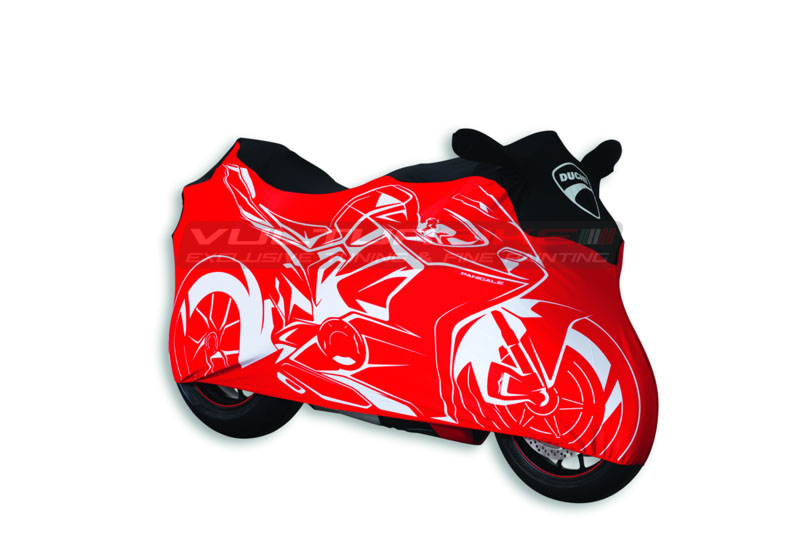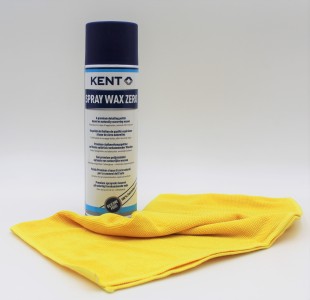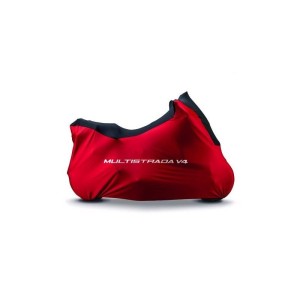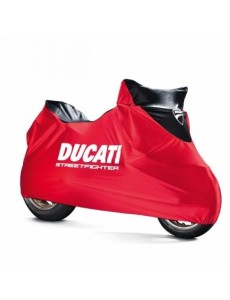
Do you want to have the bike always at its maximum and ready for use, without encountering unpleasant surprises?
Then you have to think about her both when you use her and, above all, when you don't use her. In fact, you must take steps to protect your "street beast" from the most varied atmospheric agents, but also take care of its maintenance when you do not use it for an extended period of time.
Here are some tips for both situations.
Weather
Imagine, for example, that you are in summer, a season that you rightly use to visit beautiful seaside resorts with your motorcycle. In order not to have hitches in your journey, you must keep in mind a possible "enemy" that can leave you on foot if it is not faced at its best and in time: the saltiness.
If it is not given weight, it can cause serious damage to your motorcycle, not only to the frame and metal parts but also to all electrical and electronic components. Like its "winter cousin", the salt that is released on the roads, to effectively combat it the imperative is to act as soon as possible after each motorcycle ride, carrying out a certain maintenance.
If the saltiness (or salt) has only superficially affected the components of your bike, you can rely on some do-it-yourself tricks. The first, and most important, is to wash your "two wheels" thoroughly with cold water, a sponge and mild soap. Absolutely avoid aggressive products or hot water: you will make the situation worse. During this operation you will have to put your own to remove the dirt and salt that has accumulated, and then proceed to the drying phase: use a dry cloth, compressed air and, finally, a short tour around the block.
If you have thoroughly washed and dried your bike but the salt, or salt, has not gone away completely, then you will have to proceed to disassemble the parts damaged by these atmospheric agents.
Then proceed to scratch them (with due care) with abrasive paper and cold water, and then wash them using neutral soap once the procedure is finished. Do you want more protection? On the market there are specific products for the removal of salt and salt that will act directly on the damage, without ruining the surrounding parts.
They also work on electrical contacts, which if affected by these atmospheric agents can prevent the correct functioning of the components to which they are connected. In case of negative outcome of your attempts, you will have to contact an expert bodyworker, who will analyze the extent of the damage and then draw up a repair estimate.
Motorcycle stopped for a long time
Winter leads many enthusiasts to avoid "Sunday outings" with their bikes, leaving them in the garage or parked outdoors for some time. A period that can cause significant damage to the bike, if it is not kept under control with continuity and accuracy.
Those who do not have a garage or a private garage where to park the bike during the long winter months do not have to worry too much, because the manufacturers of accessories have also thought of those who do not have this luck. The proposed solutions are generally two and consist of a folding and transportable tent or a real airtight bag that guarantees total insulation from humidity and atmospheric agents. However, it is important that both are made of breathable material so as not to create the condensation effect.
On the other hand, the classic outdoor towel is not recommended, even if it is well made, as it is useful to repair the vehicle from rain and dust deposits, but not from all corrosive agents and above all from humidity. In any case, it is always recommended to use an indoor motorcycle cover even if we have the possibility to shelter our bike in a garage or garage.
Against the danger of corrosion, lurking if the bike remains stationary for a long time, it is preferable to apply a Teflon spray on delicate parts or more subject to deterioration. Regarding the battery of the motorcycle, if it is not possible to invest in a charge maintainer or you have no way to connect it to the current, it is necessary to disconnect the terminals and check for the presence of oxide that in any case can be removed with Svitol or similar. Then it is better to spread a little Vaseline on the clamps to prevent the problem from recurring. Finally, it is advisable to always leave fuel in the tank (better full, possibly using a stabilizer, to avoid the formation of moisture), so as to periodically run the engine for at least 5 or 10 minutes, minimum time not to deteriorate the oil.
Speaking instead of the period following the winter, it would be superficial to return immediately to the saddle without having completed certain operations. The first is to get two sturdy workshop stands to make sure the tires do not touch the ground and avoid a safe ovalization. Once this is done, it is necessary to soak a cloth of warm water and pass it on all metal or aluminum parts, in particular on the fork stems and discs: the salt used by road maintenance, which may have settled on the vehicle, is in fact highly corrosive.
Once this operation is finished, it is the turn of the motorcycle chain. You must degrease well with white oil to be applied with a brush and, if this is not enough, you must use a scourer to clean the pots (which will be useful to remove any traces of rust). As a final touch, you need to apply specific lubricant for o-ring chains: with one hand you turn the rear wheel (motion in neutral) while with the other you apply the lubricant on the chain making sure that the cannula is perpendicular to the pins of the chain itself.
Finally, before whizzing by again with your bike after the winter period, you can use a specific product for cleaning fairings and plastics and apply it with a cloth on the entire vehicle. Typically, these products work very deeply, going to reconstitute the polymers that make up the materials of the motorcycle.
Alternatively, you can use a silicone spray very suitable for delicate parts such as gaskets. These are often long operations and certainly not "nice", but necessary to always have the bike in top shape.



